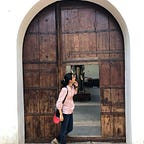From my bookshelf | Chapter: Sidewalks and Streets
The Death and Life of the ‘Sidewalk ballet’
City streets aren’t mere traffic conduits. Its activities are a peephole into the city’s mundanity or its imaginative “ballet”, as Jane Jacobs calls it.
“A city sidewalk by itself is nothing. It is an abstraction. It means something only in conjunction with the buildings and other uses that border it, or border other sidewalks near it.” — Jane Jacob, The Death and Life of Great American Cities
In her book, Jane Jacobs outlines the character of a sidewalk or a street in the distinction between the private and the public, community surveillance — “eyes on the street”, and people using it fairly continuously. How, then, do these factors translate in an Indian setting?
Indian streets, in my opinion, are on both the extreme of the scale. We have streets that are colourful, lively and exploding with activities. They align with Jacob’s take on “sidewalk ballet”, which grooves to the tune of its residents and their interactions. But you don’t have to move more than a few blocks away to be greeted with an equally dull and scarcely active street. What comes as no surprise then is that the majority of these so-called “high-end” communities see a greater share of the latter. They are also the very same localities that are dotted with high-rises.
The obvious question then is whether these 30-storey apartments are to blame?
My take is a debatable no. What has to be blamed is the inadequacy to recognise that a street that is positioned in a purely residential area can not inherently be active. What is the incentive for people like you and me to use it, if not for transit? This echoes the same issue that the book addresses through suburban streets. In fact, I am going to take a step forward and say, this is also the problem that is going to haunt the ‘tech civilizations’ [1]
Indian streets are a meeting space, a political space, a space for protests, a space for commerce and livelihood.
To take this conflation of purposes and put it in the silo of a residential neighbourhood is a crime in itself. Our definition of a “sidewalk ballet” is not focused on the stage alone. The collective engagement of the room, from the audience to the protagonist, is what urban streets in India feel like. Streets are democratic and the woven pluralism is also, ironically, its identity. It is governed by ‘moral collectivism’[2], a fundamental trust that we have for each other.
However, with the given pandemic, we are at an inflexion point like no other. Public spaces are postulated to grow at 1.5 times its basic unit [3]. Here in India, where our streets are also actively used public spaces, it is a daunting task to scale up and socially distance ourselves from each other.
In the past few months, many collaboratives[4] have taken upon themselves to transform streets for safety. Although they respond to the informality of our streets very well, they are largely short-term in nature. Without understating the impact these measures have had, they serve as the bedding to pivot out discourse now more towards the intersection of public health and public spaces in our cities.
References (that I am grateful for)
[1] Hello, World? (upcoming blog post)
[2] City Sabha on ‘moral collectivism’
[3] Capacity 1.5: Explorations on Contactless Urbanism
[4] Main Bhi Dilli
